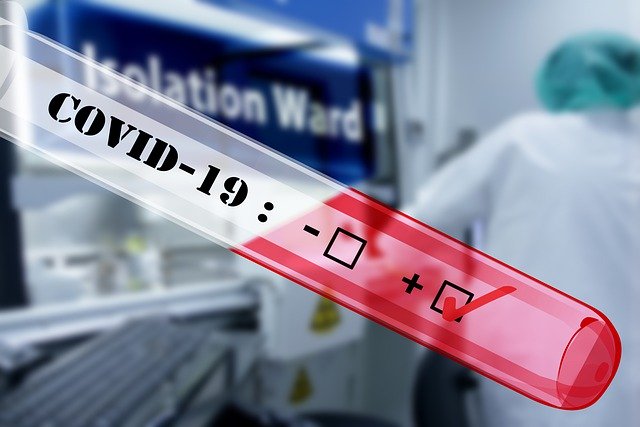@BryanRenbaum
As the coronavirus ravages Maryland and most of the globe, some doctors say an approved vaccine is a year or more away. There are 580 confirmed cases of COVID-19 in Maryland as of Thursday morning — the largest single-day increase. There were 423 confirmed cases in the state on Wednesday. Four Marylanders have died from the virus.
“There’s a pace to all of this,” Dr. Panagis Galiatsatos, an assistant professor of medicine at Johns Hopkins University in Baltimore, told MarylandReporter.com in a phone interview earlier this week. “If I gave you equipment to build a car — even with the best instructions and all the right equipment — it will take you time…The same thing with a vaccine. Even if we had all the proper equipment and all the proper bloodwork — we need about a year just to be able to assure that the vaccine works and is safe.”

Dr. Marilyn Singleton
Dr. Marilyn Singleton, who is a California-based board-certified anesthesiologist and a board member of the Association of American Physicians and Surgeons, echoed similar sentiments.
“Certainly the vaccine trials have already started — which is great. And generally it takes a year at the minimum to get a vaccine going because you’ve got to give two doses and that has to be eight weeks apart, and then you have to see whether it does anything. So to test a vaccine — it’s not something that you just make and then say: ‘Ok, I’ll give it once and that’s that.’ ”
Galiatsatos said “supportive therapy” is the best way to treat the coronavirus because many of the treatments that are currently being discussed are not appropriate for everyone.
“Right now the best way to manage coronavirus-19 is really supportive therapy. If you are dehydrated while you have this virus, we will hydrate you. If you need more oxygen, we’ll give you more oxygen. If you can’t breathe on your own, we’ll place you on a ventilator for the time being. That’s it.
“The medications that you hear being discussed at the administrative level — we really reach into them as a last resort…We have plausible reasons to suspect that they can work but they are not what we would indicate for everyone.”
Singleton echoed similar sentiments.
“With regard to treatment, there’s multiple things being tried. There is not so far a coronavirus-SARS-2 specific treatment but various drug companies are working on things. There’s other antivirals that they’re trying in the hospital — cocktails that were used for AIDS. Unfortunately, they don’t appear to be working that well. And then there’s the hydroxychloroquine that people all over the world have been trying and many are reporting very good results.”

Dr. Panagis Galiatsatos (jhu.edu)
Galiatsatos said the coronavirus is spread “through aerosol.” That means “it needs droplets of water to encircle it in order to survive outside of a host and then be picked up by someone else in order to be plugged into the body,” he said. Galiatsatos said transmission occurs through coughing, sneezing or phlegm production.
He also said it is possible that the virus is spread via fecal matter.
“We do know the type of receptor that the coronavirus-19 binds to… it is down in the colon and it can give you symptoms like diarrhea. And there has been literature that shows that the coronavirus-19 has been found in stool.”
Singleton elaborated on that point.
“From what I have read and what is interesting about it is even after it clears in the respiratory tract — later they still found it in fecal matter. And the last article I read. they said it was up to 21 days.”
Both Galiatsatos and Singleton emphasized the importance of practicing social distancing.
“The less is more in this case. That’s why we seen the government going [recommending gatherings] from ten to two [people]. It’s not that ten was wrong — it’s just when we put out this dire plea, we still didn’t get any traction on this so we keep lowering that number,” Galiatsatos said.
“Certainly the staying six feet apart from people — that is pretty hard and fast. And, interestingly, certainly grocery stores and various places that are considered essential businesses — that are still allowing people to come in have put markers at six feet to try to keep people there. And that’s a good thing,” Singleton said.
Gov. Larry Hogan in a statement on Thursday urged Marylanders to remain vigilant and practice social distancing.
“We are only at the beginning of this crisis, in our state, in the National Capital Region, and in America. As I have repeatedly stressed, we should continue to expect the number of cases to dramatically and rapidly rise…This battle is going to be much harder, take much longer, and be much worse than almost anyone comprehends. We have never faced anything like this ever before, and I continue to urge the people of our state to stay in place at home and stay safe.”
COVIDASSESSMENT

Do you think you or a family member may have been exposed? Based on CDC recommendations, the University
of Southern California’s Gehr Center and Akido Labs has developed an online assessment tool, which will
help determine what to do if you think you have symptoms of COVID-19 or may have been
exposed.





Recent Comments